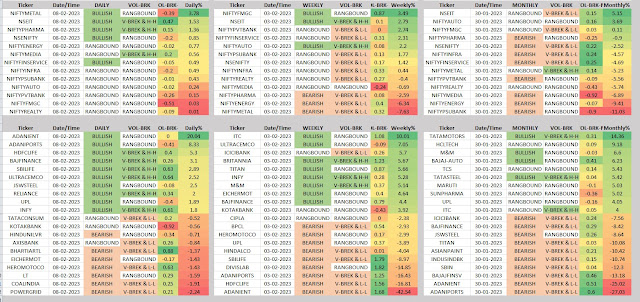Exploring Pair Trading in the Indian Stock Market
Introduction to Pair Trading
Pair trading, also known as statistical arbitrage, is a market-neutral trading strategy that aims to exploit the relative pricing discrepancies between two correlated stocks. This strategy involves taking opposite positions in a pair of stocks that typically move together. The essence of pair trading lies in identifying pairs of stocks that exhibit a strong historical correlation and then capitalizing on temporary divergences from their typical price relationship.
How Pair Trading Works
Identification of Pairs: The first step is to find two stocks that have historically exhibited a high correlation. In the Indian stock market, this could be two companies from the same sector, such as Tata Steel and JSW Steel in the steel industry.
Analysis and Ratio Calculation: Once a pair is identified, the next step is to analyze their price movements and calculate the ratio of their prices. This ratio helps in determining the historical norm and identifying deviations from it.
Trade Execution: When the price ratio deviates significantly from its historical average, traders execute trades based on the expectation that the ratio will revert to the mean. For instance, if Tata Steel becomes significantly more expensive relative to JSW Steel, a trader might short Tata Steel and go long on JSW Steel, expecting their prices to converge.
Exit Strategy: The trades are closed once the prices revert to their historical relationship, thereby capturing the profit from the convergence.
Example of Pair Trading in the Indian Stock Market
Let’s take a closer look at a practical example involving two well-known Indian companies: HDFC Bank and ICICI Bank.
Step 1: Identification of Pairs
HDFC Bank (HDFCBANK) and ICICI Bank (ICICIBANK) are both major players in the Indian banking sector. Their businesses are similar, and they tend to be influenced by the same economic factors, making them suitable candidates for pair trading.
Step 2: Analysis and Ratio Calculation
Suppose we analyze the daily closing prices of HDFC Bank and ICICI Bank over the past year. We calculate the price ratio of HDFC Bank to ICICI Bank for each day and determine the average ratio.
For simplicity, let's assume:
- Average Price Ratio (HDFC/ICICI) = 1.2
Step 3: Trade Execution
Now, let’s say the price ratio has deviated significantly from this average:
- Current Price of HDFC Bank = ₹1,500
- Current Price of ICICI Bank = ₹1,000
- Current Price Ratio = 1.5
The current price ratio of 1.5 is significantly higher than the historical average of 1.2, suggesting that HDFC Bank is overvalued relative to ICICI Bank.
Trade Setup:
- Short HDFC Bank
- Long ICICI Bank
The expectation here is that HDFC Bank's price will decrease relative to ICICI Bank, or ICICI Bank's price will increase relative to HDFC Bank, or a combination of both.
Step 4: Exit Strategy
The trade will be closed when the price ratio reverts to its historical average of 1.2. Assuming the prices adjust accordingly:
- HDFC Bank price decreases to ₹1,440
- ICICI Bank price increases to ₹1,200
- New Price Ratio = 1.2
By closing the positions, the trader locks in the profit from the convergence of the price ratio.
Benefits and Risks
Benefits:
- Market Neutrality: Pair trading is neutral to overall market movements, reducing exposure to systemic risks.
- Diversification: Engaging in multiple pairs can diversify a trader's portfolio and reduce risk.
Risks:
- Model Risk: The historical correlation between stocks may not hold in the future, leading to potential losses.
- Execution Risk: Timing the entry and exit points accurately is crucial and can be challenging.
Conclusion
Pair trading is a sophisticated strategy that leverages statistical analysis to capture pricing inefficiencies. By understanding the relationships between stocks and carefully monitoring their price ratios, traders can execute trades that are independent of overall market directions. As demonstrated with HDFC Bank and ICICI Bank, this strategy can be effectively applied in the Indian stock market to generate consistent returns.
Disclaimer: Pair trading involves significant risk, and it's essential to conduct thorough research or consult with a financial advisor before engaging in such strategies.






